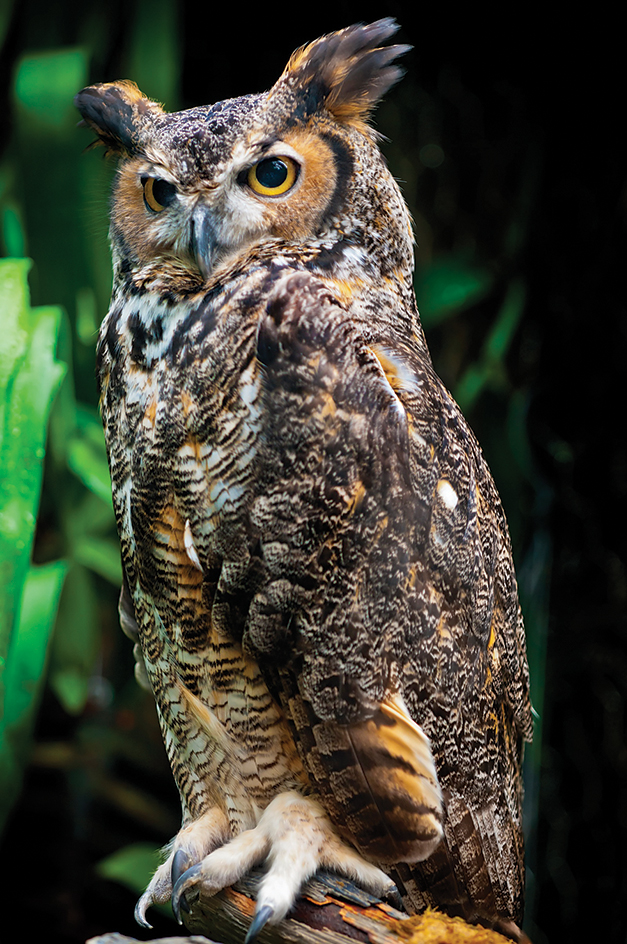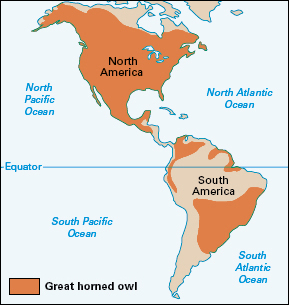Great horned owl is a large bird of prey named for the tufts of feathers that stick up like horns on the sides of its head. It is a common owl that lives throughout North America outside the cold, treeless tundra regions of northern Canada and Alaska. It also lives throughout much of Central and South America. Great horned owls often live near people in such places as city parks and rural residential areas. The owl stays mostly in the same area throughout the year. A great horned owl can often be heard calling at night to declare its territory against neighboring owls. The most common call is a series of deep hoots, sounding like whoo, hoo-hoo, whoo, whoo.


Great horned owls vary in size throughout their range. Males typically weigh 2 to 3 pounds (0.9 to 1.3 kilograms). Females are larger and typically weigh 2 1/2 to 4 pounds (1.1 to 1.8 kilograms). The average wingspread of a great horned owl is 48 inches (120 centimeters). The coloration of great horned owls varies, but they may have brownish to dull yellow or white feathers with grayish brown, black, or white markings. Great horned owls have striking yellow eyes.
The great horned owl can be found in a broad range of habitats, including forests, deserts, and farmlands. It feeds mainly on hares, rabbits, and small rodents. It also feeds on such prey as insects, frogs, lizards, snakes, and birds. Great horned owls occasionally eat other owls. Due to their large size, adult great horned owls have few predators.
Great horned owls nest in many different places, including holes in trees, ledges on cliffs, and the abandoned nests of other large birds. Females lay one to five eggs and raise only one brood (group of young) per year. In the southern United States, nesting usually starts in January or February, whereas eggs are usually not laid before March in northern Canada. Incubation lasts about 32 to 35 days, and the eggs hatch at intervals of about 2 days. If there is not enough food, the smallest young often go hungry. They may even be eaten by their older siblings. Young great horned owls leave the nest before they can fly. They wander among branches or ledges while their parents continue to care for them. At this stage, the young owls may fall to the ground, where they are in danger of being eaten by predators. They must use their talons to climb to safety. The adults care for their young into the summer or autumn. The young owls then leave the nest area in search of their own territories.
